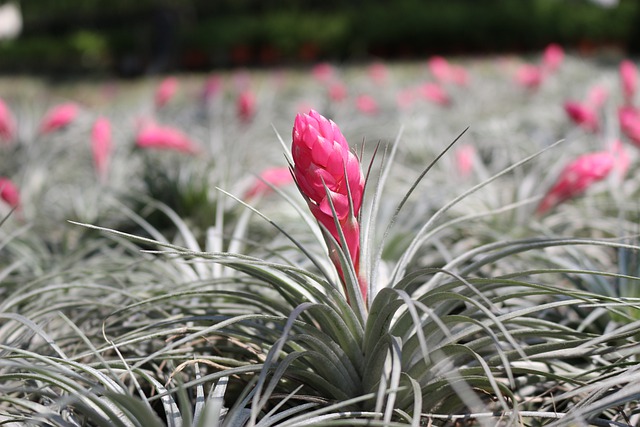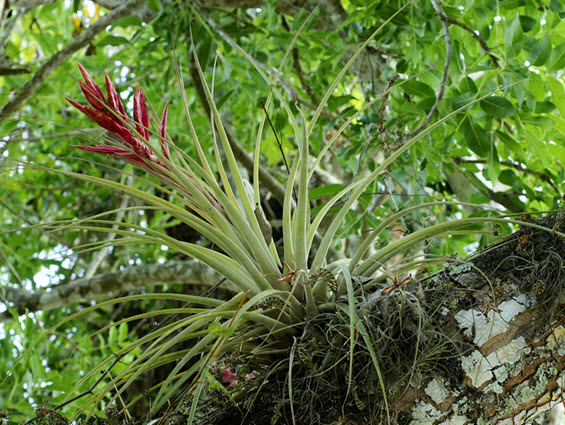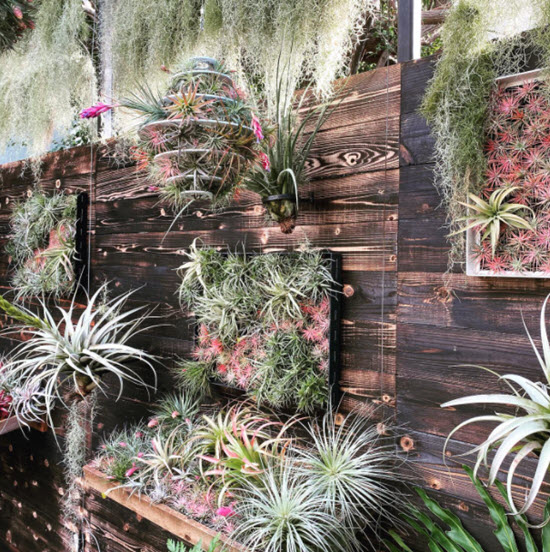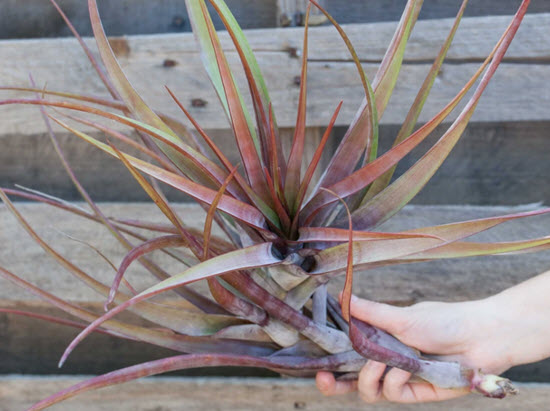Click below to listen to my 2 min. Garden Bite radio show: Air plants
Air plants have become a fun, trendy plant. Their Latin name is Tillandsia and they are native to South and Central America with about 500 species!

Do they really grow with no soil? Yes, they are epiphytes, meaning they grow on other plants, usually tree branches but they’re not a parasite. They’re a cousin of bromeliad.

They take in nutrients through their leaves from the air and occasional rainfall. They have tiny hair-like parts on their leaves that allow them to absorb water. Their roots, such as they are, are used to anchor the plant to a surface.
These plants like bright, indirect light. As for watering, soak your air plant for about an hour a week. Remove and let “drain” on a paper towel till dry, then put it back in its place. You can also MIST your air plants if mounted in a way that makes soaking cumbersome.
At maturity, Air plants will produce a flower.

Some air plants will produce multiple blooms all at the same time. Then come “pups”, baby plants that can gently be removed and are new plants. The mother plant then sends all her nutrients to the pups, eventually she’ll begin to die but you’ve got plenty to continue with.

Air plants can be displayed in so many ways that your imagination can go wild. In glass orbs, on drift wood, in seashells, on a wire frame, peeking out of a basket or gourd, attached to corks. Do a google search for ideas and you’ll get, literally, 58 million sites! YIKES. Wire, fishing line and glue are some ways to attach your air plants. Just remember they still need water!
They can be purchased at various sizes too.

